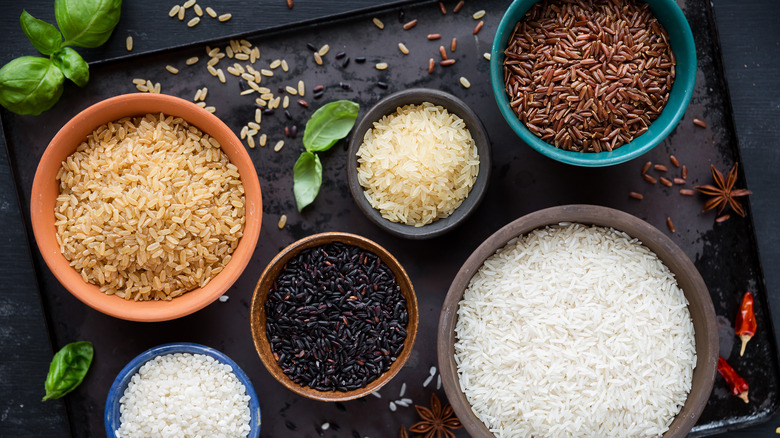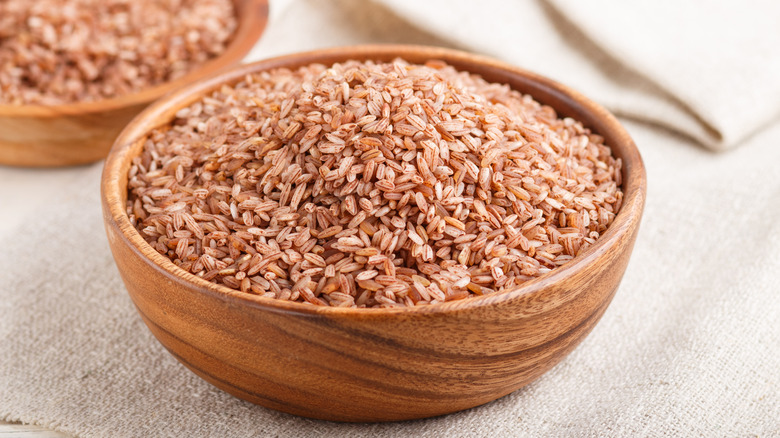The Reason Brown Rice Doesn't Last As Long As Others
Brown rice is a staple in kitchens around the world. High in magnesium, and fiber with slightly more antioxidants than white rice, this chewy, nutty-tasting grain can lower blood sugar levels and decrease diabetes risk (via Healthline). While white rice is processed to remove outer layers of bran and germ, brown rice is intact, with those extra coatings adding health-supporting vitamins and minerals to your meal (per WebMD). But as Money Crashers warns, few things are worse than finding ruined food in your pantry, and brown rice is one of those bulk items with an unexpected expiration date.
Rice is rice, isn't it? Not so fast. Eat By Date gives white rice a shelf life of up to five years, but brown rice has a shorter life span: eight months if stored on a dry, cool shelf, with a few extra months of freshness if kept in the fridge. Some rice varieties like white, wild, and basmati seem to keep on your shelf forever, but brown rice requires extra attention if you want it to last the better part of a year. Read on to find out why.
Unprocessed with extra nutrients
Aside from budgeting in extra time to cook brown rice (soaking it in advance can help), you will also need to plan grocery lists carefully. Health Hub explains that since brown rice is not polished or milled, it contains a small amount of oil in the bran's outer layer. Those natural oils mean faster spoil rates, according to Still Tasty. To protect your brown rice and keep it fresher for longer, store uncooked kernels in airtight containers. If you're looking to maximize the limit of listed expiration dates, place rice from opened bags into the freezer. This can help extend the life of your brown rice for up to a year and a half. Does It Go Bad? recommends looking for the usual signs when determining whether a batch of rice has turned rancid: if you notice mold, discoloration, bad smells, or wet textures, throw it away.

